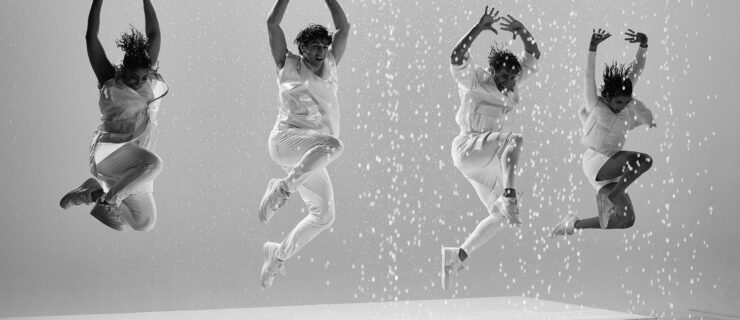How to Watch Dance Online
With the pandemic interrupting live performances around the world, many dance companies are putting extraordinary content online, and much of it is available for free. Usually, full-length productions from major companies are only accessible to people who can afford pricy tickets and travel to large urban opera houses. Now, significant pieces that have influenced thousands of dancers and dancemakers are just a click away.
It’s a remarkable chance to explore unfamiliar works and expand your dance horizons. But if you’re used to watching shorter dance clips on social media, you might find it challenging to get into a performance that isn’t made for the screen. To help you make the most of the resources currently available, we asked three top professionals for their advice on watching dance.
Imagine the Full Experience
When you watch dance on TikTok or Instagram, pretty much everything you see has been made with a camera in mind. But that’s not the case when you’re watching a live performance that’s been filmed. The choreographer and other artistic creators envisioned their work for a live audience. So try to imagine what it would be like to be in the theater. Picture the lights going dark, and the energy of the cavernous space changing as the curtain rises. (It might help to dim the lights wherever you are in real life.) Can you feel the thrum of the live orchestra? Can you hear the dancers breathe, and the sounds of their footfalls?

Jordan Pelliteri (front) in Ohad Naharin’s George and Zalman (Rahi Rezvani, courtesy Pelliteri)
Look at the Entire Production
A live performance is about more than perfect dancing. As dancer Jordan Pelliteri of Nederlands Dans Theater 2 (NDT2) notes, most professional choreographers are really trying to say something about the world with their art. See if you can figure out what the dance itself is trying to express. How are the lighting, sets, and costumes contributing to the overall feeling of the production?
Elisa Clark, who’s danced for Mark Morris, Alvin Ailey and many others, suggests you consider “the arc of the whole dance, energetically.” Notice how the choreographer uses space, unison, and facings to produce an effect. Ask if there’s a story. If there is, how does each movement phrase contribute to the narrative? If there isn’t, what other choreographic throughlines do you see? Brandon Cournay, a member of Mark Morris Dance Group, recommends looking for motifs (signs, symbols, or patterns) that reappear throughout a dance.

Brandon Cournay (Matthew Murphy, courtesy KEIGWIN + COMPANY)
Focus on Specific Dancers
The world-class dancers in these performances will inevitably impress you with their technique—but they can also teach you a lot about artistry. “In professional dance companies, everyone is amazing, and yet usually you’re still drawn to a favorite,” says Clark. “What is it about their performance that’s captivating you?” Analyze how that standout is interpreting each phrase.
Pay special attention to the in-between moments. When Pelliteri first saw videos of Nederlands Dans Theater years ago, she was blown away by the way a single dancer managed to infuse every part of her body with energy as she moved through each step. Cournay feels similarly. “There are high leg extensions and virtuosic moves in the professional world,” he says, “but what about the transitional movements?” What does the dancer do before and after the hyperextended line that makes your jaw drop?
Be Curious—and Act on Your Curiosity
Clark, Cournay, and Pelliteri all agree that curiosity and research are critical to taking your dance viewership to the next level. If you want to fully understand a production, explore the context in which it was made. Find out when the dance was created, and what else was happening in the world at that time. Many famous choreographers also worked for other big names in dance; who may have influenced this choreographer? When you’re drawn to a particular dancer, find out where they trained, and see if you can learn more about what helped them develop into the artist you see on the screen.
If possible, get your information from the sources themselves. Clark suggests looking up interviews with the dancemaker and/or dancers to learn more about what went into the piece. (Right now, many interviews are also available online.)

Elisa Clark performing at the Dance Magazine Awards (Christopher Duggan)
Bring It Back to Your Body
Want to take your engagement with online dance a step further? Try learning some of the choreography you’re watching. A lot of professional jobs will ask you to pick up repertoire from a video, something Cournay said he didn’t know to expect when he first started his career.
Find a dance online that you enjoy, and see if you can learn one small phrase from the work. (Safety is key here, so if you’re not sure what choreography is appropriate for your environment or skill level, ask your teacher.) You might not have space to do big moves full-out, but as Clark notes, sometimes the simplest things are the hardest to do well onstage. This is a great time to figure out how to stand with your whole body energized, express meaning through every part of a small gesture, or find the performative power of focusing your eyes.
Think like a professional. Developing every moment of your dancing will help you become a more complete artist. Channel the beautiful performers you’ve admired onscreen. Imagine yourself on that big proscenium stage.




